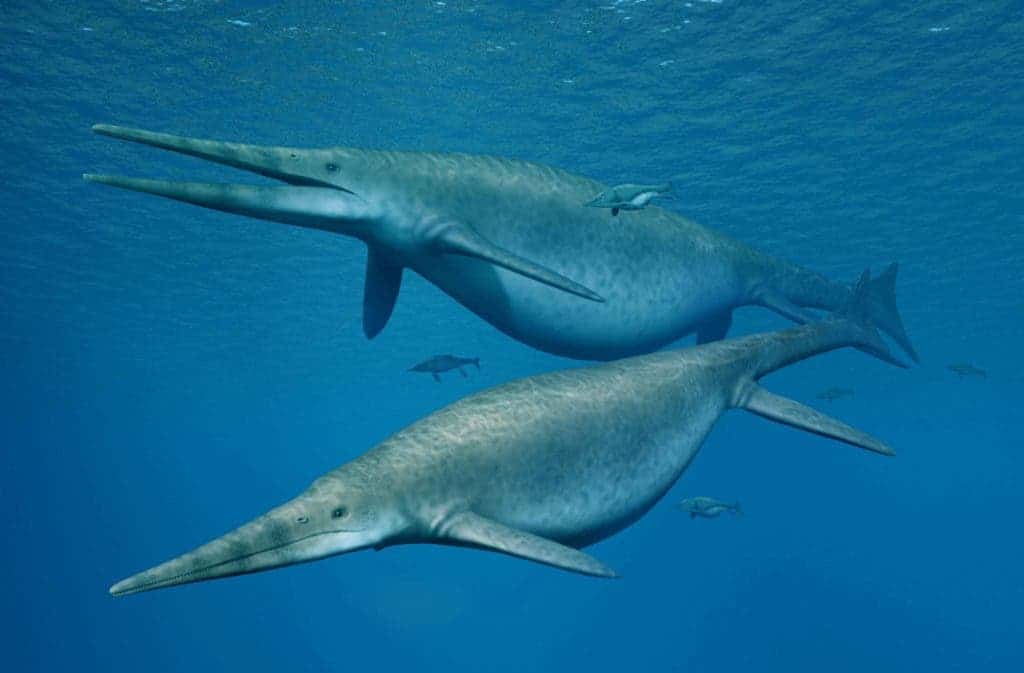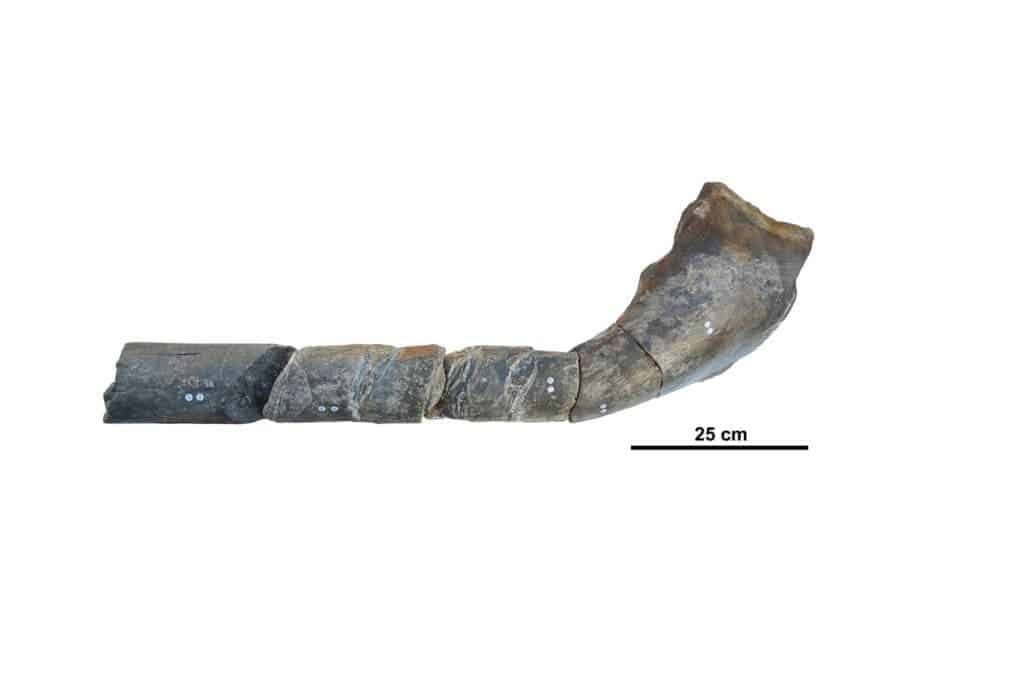Paleontologists have come across an astonishing 205-million-year-old jaw-bone that, judging from its size, must have belonged to one of the largest animals ever.

Illustration of Shonisaurus, a 69-foot ichthyosaur similar to the newfound ichthyosaur. Credit: NOBUMICHI TAMURA.
The prehistoric bone belongs to a giant ichthyosaur, a marine reptile that lived during the Early Jurassic Period. These reptiles, which resembled dolphins, used to dominate all kinds of watery environments — both near and far from shore — and diversified in dozens of genera. Competition from other species, however, eventually drove them to extinction. The last ichthyosaur disappeared from the fossil record 25 million years before the giant asteroid impact that wiped out the dinosaurs.
Giant jaws
The 205-million-year-old remains recently described in the journal PLOS ONE have solved a 19th-century mystery. In 1850, beachgoers to southern England had discovered such huge fossils by the shore that paleontologists thought they were dealing with some kind of long-necked sauropods. Now, thanks to the newly identified jawbone found by British fossil collector Paul de la Salle, we know that the ancient creature is actually one of the largest-known ichthyosauri. In fact, it might have belonged to the largest creature on Earth — larger than a blue whale, which currently holds such a title.
The jawbone described by de la Salle and colleagues measures 3.1 feet (96 centimeters) in length. A comparative examination of the jawbone suggests it belongs to a giant kind of ichthyosaur called shastasaurid, which hails from the Triassic, which lasted from 251 million to 199 million years ago. The new species doesn’t have a name yet, but the individual in question has been tentatively christened ‘the Lilstock specimen’ for now.
Judging from the size of the shastasaurid’s jawbone, researchers estimate the animal must have been more than 85 feet (26 meters) long, which would make it the largest ichthyosaur on record — up to 25 percent larger than the previous record holder, Shonisaurus sikanniensis, a 69-foot-long (21 m) individual previously discovered in British Columbia.

The reassembled jaw bone, which belonged to the 85-foot ichthyosaur. Credit: DEAN LOMAX, THE UNIVERSITY OF MANCHESTER.
“As the specimen is represented only by a large piece of jaw, it is difficult to provide a size estimate, but by using a simple scaling factor and comparing the same bone in S. sikanniensis, the Lilstock specimen is about 25% larger. Other comparisons suggest the Lilstock ichthyosaur was at least 20-25 m. Of course, such estimates are not entirely realistic because of differences between species,” said Dean Lomax, an ichthyosaur expert at the University of Manchester.
“Nonetheless, simple scaling is commonly used to estimate size, especially when comparative material is scarce.”
Besides suggesting that this giant sea creature might have been the largest creature ever to roam the Earth, the findings have helped settle a long-standing debate regarding the 19th-century fossils found near the village of Aust in Gloucestershire, England. The very large fossilized bones and fragments had been initially interpreted as belonging to some large terrestrial dinosaurs, but this never quite made sense. The discovery of the Lilstock specimen refutes previous identifications and also the most recent assertion that the Aust bones represent an early experiment of dinosaur-like gigantism in terrestrial reptiles.
Dean added: “One of the Aust bones might also be an ichthyosaur surangular. If it is, by comparison with the Lilstock specimen, it might represent a much larger animal. To verify these findings, we need a complete giant Triassic ichthyosaur from the UK – a lot easier said than done!”









